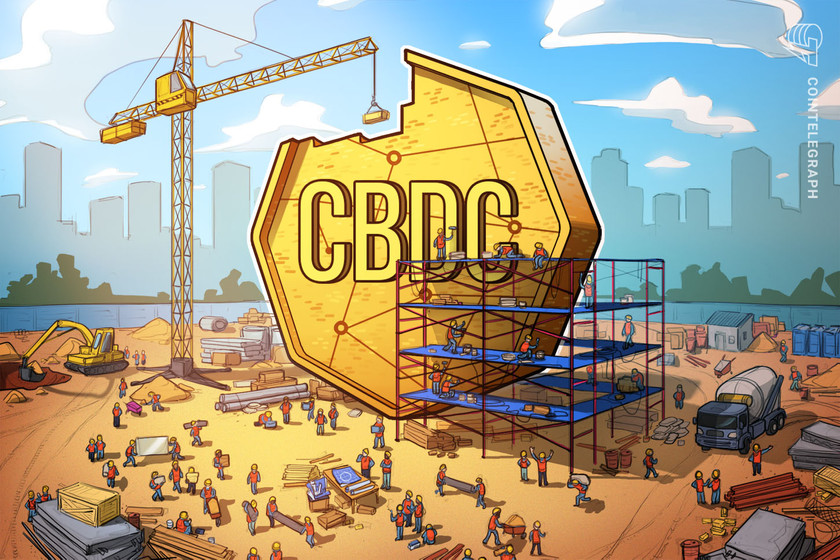UST aftermath: Is there any future for algorithmic stablecoins?
TerraUSD (UST) is an algorithmic stablecoin that is pegged at $1.00. But, on the evening of May 19, it was trading for $0.083.
This isn’t supposed to happen, of course, but last week UST, along with its affiliated coin Terra (LUNA), performed a sort of death spiral that “wiped nearly $50 billion of investor wealth in a few short days,” according to NYDIG’s May 13 newsletter.
The crash shook the crypto sector, but it also raised some questions: Is this about a single flawed project or is it also about an entire class of cryptocurrencies — algorithmic stablecoins — which use an arbitrage mechanism instead of fiat reserves to keep their market price stable? That is, are algo stables inherently unstable?
Also, how have last week’s events affected more traditional stablecoins, like Tether (USDT), the industry’s largest, but which also briefly lost its 1:1 peg to the United States dollar? And, what about implications for the cryptocurrency and blockchain space generally — has it too been tarred by UST’s fall?
Finally, what lessons, if any, can be drawn from the week’s tumultuous events so that this doesn’t happen again?
Can algo stables survive?
As the dust settles, some are asking if the UST/LUNA flatlining spells the beginning of the end for algorithmic stablecoins as a class. For the record: Some algo stables, including UST, may be partially collateralized, but algo stables rely mainly on market maker “arbitrage” activity to maintain their $1.00 market price.
Pure algo stables, which put up no collateral at all, are “inherently fragile,” according to Ryan Clements, assistant professor at the University of Calgary Faculty of Law. They “rely on numerous assumptions for operational stability, which are neither certain nor guaranteed.” As he further explained to Cointelegraph:
“Specifically, they require ongoing demand, willing market participants to perform arbitrage and reliable price information. None of these are certain and all of them have been tenuous during times of crisis or heightened volatility.”
For these reasons, last week’s bank run on LUNA and UST and the ensuing “death spiral” that resulted could have been predicted, said Clements, who indeed warned of something like this in an October 2021 paper published in the Wake Forest Law Review.
“Prior to the failure of UST, I argued that algorithmic stablecoins — those that are not fully collateralized — are based purely on confidence and trust in the economic incentives of the stablecoin issuer’s underlying ecosystem. As a result, there is nothing stable about them.”
“I don’t see how algorithmic stablecoins can survive,” Yves Longchamp, head of research at SEBA Bank — a Swiss regulated digital assets bank — told Cointelegraph. Last week’s drawdown in the stablecoin space showed that:
“Not all of them are created equal and that quality matters. Relatively transparent, fully-collateralized fiat stablecoin USD Coin does better than somewhat opaque fully-collateralized fiat stablecoin Tether, which, in turn, does better than partially collateralized, algorithmic stablecoin UST.”
Is more collateral the answer?
Others, like Ganesh Viswanath-Natraj, assistant professor of finance at Warwick Business School, agreed that algo stablecoins are “inherently fragile,” but only insofar as they are under-collateralized. They can be shored up by “dollar reserves or an equivalent in stablecoins on the blockchain. Alternatively, they can adopt a system of over-collateralization through smart contracts.” The latter is how decentralized stablecoins like Dai (DAI) and Fei (FEI) work.
Kyle Samani, co-founder of Multicoin Capital, largely agreed. “The problem with UST wasn’t the algorithm, but the lack of collateral.”
“An algorithmic stablecoin is very challenging,” Campbell Harvey, Duke University finance professor and co-author of DeFi and the Future of Finance, told Cointelegraph. “Every time you’re under-collateralized, you run the risk of a so-called bank run.”
What was worse in the UST case is that it used an affiliated cryptocurrency, LUNA, to help keep its price steady. LUNA was “highly correlated with the fate of UST,” said Harvey, and when one began to sink, the other followed, which drove the first token’s price down even more, and so on. He added:
“Does this mean it will be difficult to launch another algorithmic stablecoin? Yes. Does this mean the idea disappears? I’m not sure about that. I’d never say never.”
What is more certain is that UST was using a flawed model, insufficiently stress-testing and lacking in circuit breaking mechanisms to break the fall when the death spiral began, said Harvey.
Recent: ‘DeFi in Europe has no lobby,’ says co-founder of Unstoppable Finance
Are algo stables even needed?
One hears again and again that algorithmic stablecoins are a “fascinating” experiment with important implications for the future of global finance. Indeed, a purely algorithmic stablecoin that sustains operational stability without reserves is sometimes viewed as the “holy grail” in decentralized finance (DeFi) development, Clements told Cointelegraph, adding:
“This is because, if it could be attained, it could scale in a capital efficient manner and still be ‘censorship resistant.’”
“We need a decentralized stablecoin,” Emin Gün Sirer, founder and CEO of Ava Labs, declared last week. “Fiat-backed stables are subject to legal seizure and capture. A decentralized economy needs a decentralized stablecoin whose backing store cannot be frozen or confiscated.”
Are stablecoins subject to seizure? “This is certainly true,” commented Samani, “but it hasn’t been much of a problem historically. In general I think most people overstate this risk.”
“I see the argument,” Todd Phillips, director of financial regulation and corporate governance at the Center for American Progress and a former Federal Deposit Insurance Corporation lawyer, told Cointelegraph.
What he can’t understand, however, is how decentralized assets get around this conundrum: Decentralized assets are invariably more volatile than traditional assets, and so to pledge that their assets will hold a stable value — and not back them with stable assets like U.S. dollar but with other decentralized assets, like LUNA, or an arbitrage mechanism — is ultimately just asking for a UST-type scenario.
Many were deploring Terra and its “flawed” stablecoin model last week, but maybe the notion of an algorithmic stablecoin in itself isn’t so outlandish, especially if one takes a more historic view of money. Look at how the U.S. dollar and other currencies evolved in terms of their backing or “reserves,” Alex McDougall, the president and COO of Stablecorp — a Canadian fintech firm, told Cointelegraph — further explaining:
“Fiat currencies started out as ‘fully-backed,’ like by gold, silver, etc, and evolved into basically algorithmic currencies with the central banks being the opaque algorithm underpinning and managing their value.”
Consequences for crypto generally
In the longer term, will the TerraUSD collapse have a lasting impact on the larger cryptocurrency and blockchain world?
“It will help formulate clear principles on stablecoin design and the need for stable and liquid reserves to back the peg at all times,” said Viswanath-Natraj. “For regulators, this is an opportunity to introduce rules on auditing and capital requirements for stablecoin issuers.”
Clements already sees some changes in the stablecoin environment. “In light of Terra’s failure and the contagion that it caused across crypto markets, demand has moved to fully or over-collateralized forms.”
Stablecoins are largely a U.S. phenomenon, but the UST crash could have implications in Europe, too, Oldrich Peslar, legal counsel at Rockaway Blockchain Fund — a Swiss venture capital firm — told Cointelegraph. For example:
“In the EU, there is a discussion about whether there should be a real claim for redemption by law for all stablecoins, whether they should always be backed at least 1:1, and whether the issuance of stablecoins can be halted if they grow too big, or even whether the regulation should apply to decentralized stablecoins.”
“The UST saga,” Peslar continued, “could serve as a pretext for stricter regulation rather than for a softer approach.”
Longchamp predicted that “algorithmic stablecoins will be under pressure and are unlikely to be part of coming regulation” in Europe — which is not a good thing for algo stables because in Europe, regulation is tantamount to acceptance. “My prediction would be that only audited asset-backed stablecoins will be regulated and encouraged.”
Last week’s events could even “chill” institutional and venture capital formation for stablecoin and DeFi projects, at least in the near term, suggested Clements. It will also likely hasten regulatory policy formation in the U.S. and internationally around all stablecoin forms, “identifying taxonomic forms, and distinguishing operational models.” This is needed because algorithmic versions of stablecoins “are not stable and should be distinguished from the fully collateralized forms.”
It may even discourage retail investment in crypto markets at large “given the impact of the failure of Terra on the larger market,” added Clements.
On the positive side, Bitcoin (BTC), the oldest and largest cryptocurrency by market cap, often viewed as a bellwether for the entire industry, held up relatively well last week. “Even though the market collapsed and BTC lost most of its value, its price has remained close to $30,000, which is high,” said Longchamp. “The value offered by blockchain and crypto in the market remains strong.”
In the stablecoin sphere, performances were mixed. “What was the impact on DAI? There was no impact,” said Harvey, referencing the leading decentralized stablecoin. “What was the impact on FEI, another decentralized stablecoin? There was no impact. There was no impact because those coins were over-collateralized and have multiple mechanisms to make sure the peg stays as close as possible to one dollar.”
“What happened to USDC? Nothing,” continued Harvey, alluding to USD Coin (USDC), the centralized stablecoin with a 1:1 USD backing. “But, what about Tether? Tether is a centralized stablecoin backed by fiat, but Tether is so opaque that we don’t know what the collateral is.” The result: “Tether took a hit” because “people said, ‘Well, maybe this is just a situation similar to UST.’” Its opaqueness was held against it, he suggested.
Tether, in its defense, claimed in a May 19 statement that “Tether has never once failed to honor a redemption request from any of its verified customers.” And, on the reserves front, Tether said it was reducing its commercial paper investments, for which it has been criticized, and increasing its U.S. Treasury Bill holdings.
Recent: Indian government’s ‘blockchain not crypto’ stance highlights lack of understanding
Lessons learned?
Finally, what lessons, if any, can be learned from the UST tumult? One can probably assume that the “quest” for a pure algorithmic stablecoin will continue among DeFi developers, Clements told Cointelegraph. But, it is important that it be “done within a regulatory environment that has sufficient consumer and investor safeguards and disclosures.”
The last week has brought us closer to crypto regulation in the U.S., according to Phillips, “at least I hope so, because we need regulation so investors don’t get hurt.” At a minimum, they should be forewarned about the risks.
Overall, given that the crypto and blockchain industry is still in early adolescence — only 13 years old — periodic failures like UST/LUNA probably should be expected, Harvey added, though “we hope the frequency and the magnitudes decrease.”
A certain amount of philosophical calm might be in order too. “We have to take the position that we’re 1% into this disruption using decentralized finance and blockchain technology, and it will be a rocky ride,” said Harvey, adding:
“The problems that DeFi solves are very substantial. There’s a lot of promise. But it’s early and there will be a lot of iterations before we get it right.”









